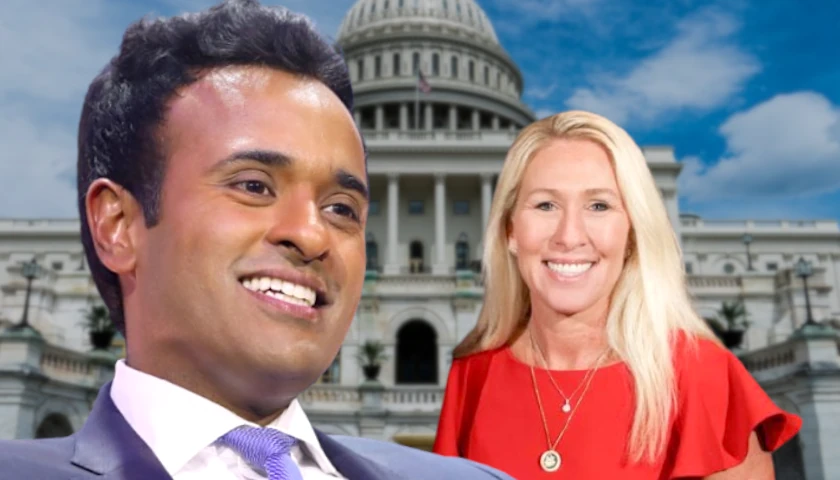by Kevin Killough
With the passage of the Inflation Reduction Act in 2022, the federal government boosted tax credits, hoping to help American consumers wary of the higher sticker prices for electric vehicles (EVs) to warm up to them. In a further push, in May of this year, the EPA proposed emissions standards on new vehicles that are designed to make 60% of all new vehicle sales to be electric powered by 2030.
The automotive industry responded eagerly to the push for EVs, pledging to transform large portions of their business over to electric lines. A Reuters analysis in October 2022 estimated that 37 global automakers were planning $1.2 trillion in investments in EVs, batteries and materials for the transition through 2030.
While the automakers were on board with the transition, American consumers weren’t so committed. Business Insider reported in August that EVs were piling up at sales lots and some dealers were turning away new units.
“The early adopters are done. And the curious have probably already made their purchases. And now we’re seeing the drop off,” Aaron Turpen, an automotive journalist who has test driven and written about many models of EVs, told Just the News. Automakers began to reconsider their EV targets this month in the face of disappointing earnings results in the third quarter.
Ford announced last week that it was delaying the spending of $12 billion in investments for the expansion of its EV manufacturing capacity after posting a $1.3 billion loss in its EV division. Honda and General Motors canceled a plan to develop smaller, more affordable electric vehicles.
Losing $200 million per week due to the United Auto Workers strike, GM warned it was unlikely to achieve its target $14 billion profit this year.
In July, GM CEO Mary Barra said at a conference in Aspen, Colorado, that the industry was seeing a “seismic shift” and that it was “literally phasing out the internal combustion engine.” In 2022 Barra had told investors in that it was going to deliver 400,000 EVs by the end of 2023.
The Wall Street Journal reported last week that GM is abandoning their goal in the face of weak consumer demand. Mercedes-Benz had vowed to be all-electric by 2030, but Edmunds data shows that dealers were taking 82 days to sell the brand’s electric EQ models in September, which was more than twice the rate of its other models. “This is pretty brutal,” Mercedes-Benz CFO Harald Wilhelm said on an analyst call.
Auto journalist Turpen said in his interview “I’ve driven all of their vehicles, and they’re great. The problem is that you’re buying a small SUV for 100 grand. That’s not inside most people’s budget.” The sales prices, according to one study, also don’t reflect what the actual price would be were it not for all the subsidies that the federal and state governments are pouring into the EVs. That study, from the Texas Public Policy Foundation, says that without those government subsidies, EVs would cost consumers nearly $50,000 more.
Despite all that support from taxpayers, even Tesla is having trouble. It took six years for Tesla to sell 200,000 cars. Two years after Ford introduced the Mustang Mach-E, the company had sold 150,000 units. In 1983, when Chrysler introduced the minivan, consumers bought 200,000 in the first year. Ford introduced the original Mustang in 1964, and the company sold 1 million units in the first 18 months. Tesla took 92 months to reach that milestone, and Tesla’s EV market share shrank to 65% in 2022 from 71% in 2021, according to Investopedia.
While EV sales aren’t matching the expectations of automakers, they are continuing to grow, and the sales numbers for EVs in the past decade may give the impression electric vehicles are taking over the world’s roads. According to the Information Energy Agency, global sales of all EV makes surpassed 10 million in 2022. However, a report by Mark Mills, senior fellow at the Manhattan Institute, shows that compared to transformative changes in the gas-powered vehicle sales market in the past, the adoption of EVs hasn’t been nearly as rapid.
Besides the concerns about purchase price, people also worry about battery range and charging infrastructure. The federal mandates are geared toward getting as many drivers as possible into an EV, but they could be having the opposite effect.
Ford Executive Chairman Bill Ford, who is the great-grandson of Ford founder Henry Ford, told the New York Times that the mandates “politicized” the electric car. “Some of the red states say this is just like the vaccine, and it’s being shoved down our throat by the government, and we don’t want it,” Ford said.
Turpen said a lot more scrutiny has fallen on EVs than on conventional cars. Any EV problem or recall can make headlines, he said, and for a nascent industry, there are many recalls as the technology develops. “If your Toyota Camry has an issue, and they do a recall, unless it’s like a huge deal that could cause giant death and dismemberment, it probably doesn’t get a headline. But if your General Motors EV comes out, and you suddenly have a bunch of recalls for various reasons, those get headlines because electric vehicles get headlines,” Turpen said.
Turpen also said that he believes widespread adoption of EVs will eventually happen, but he was always skeptical of the mandate targets. “I knew the can was going to be kicked down the road,” Turpen said.
Addressing the charging demand to keep EVs on the road will likely take a lot longer than the Biden administration is hoping for. Just as automakers are facing financial problems, according to the Motley Fool, so are the companies building out charging stations.
Steve Goreham, author of “Green Breakdown,” told Just The News that since most people charge at home, there just isn’t enough demand to support a revenue stream to cover the high cost of installing a charging port: A fast charging port that can charge an EV up in about 30 minutes costs $100,000, Goreham said, which is five times more expensive than a gas pump. And in the time a gas pump could serve five customers, a charging port will serve one.
“So, you’re going to have a 25 to 1 disadvantage. These things are very poor commercial deals,” Goreham said. He also predicts that utilities will eventually take over charging stations when private companies abandon the market. Federal and state governments will pour subsidies into the utilities, with ratepayers picking up the rest of the cost of operations and maintenance. “That’s the only way these things are going to be viable, because you just can’t do it commercially,” Goreham said.
Market conditions in all industries change, and businesses often have to adjust plans. None of the auto executives are walking back their commitments to electrifying the American automotive industry. So far, their statements in the media have been limited to delays in reaching their previously stated goals.
Conditions may improve enough to recharge consumer interest in EVs, putting current troubles in the rear view mirror. If it turns out that EVs remain unworkable for the majority of American consumers, however, it won’t be the first time the industry was wrong.
– – –
Kevin Killough is a reporter for Just the News.






The Government EV push and mandates are based on a lie: global warming caused by fossil fuel vehicles. Like the CDC lies about Covid and the Vax, the public now knows that our Government officials are lying about the apocalyptic impact caused by the public’s love of inexpensive gasoline powered cars. You cannot sell $100,000 cars based on a lie.